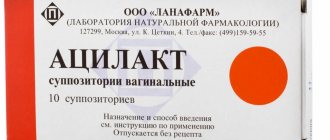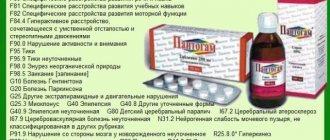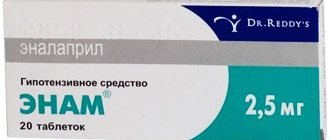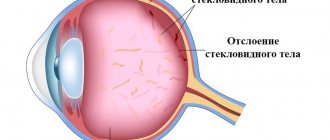Angina attacks, coronary heart disease and other pathologies are associated with insufficient oxygen supply to tissues. Trimetazidine tablets are used to prevent and treat these diseases. They strengthen the cells of the heart muscle (myocardium) and neurons, improve the condition of the brain and organ of vision.
Description of the drug "Trimetazidine"
"Trimetazadine" is a drug with the same active ingredient in the form of trimetazidine hydrochloride. Acts as a cardioprotective and antianginal agent. Release form: round tablets with a pink coating. One tablet may contain 20 or 35 mg of the active ingredient. Each package contains 30 or 60 pcs.
The use of tablets reduces tissue hypoxia and increases their oxygen saturation. This helps protect blood vessels and the heart muscle - the myocardium. Another positive effect is associated with improved condition of the brain, visual organs and vestibular system.
The active substance stimulates metabolism in the tissues of the myocardium and sensory organs, which is especially important in the presence of ischemia. Trimetazidine directly affects neurons - brain cells, as well as cardiomyocytes. As a result, oxygen consumption improves and chemical decarboxylation reactions are activated. This leads to increased energy efficiency of tissues, thereby protecting cells from damage.
The drug is also used in the presence of pathology of the organ of vision. Trimetazidine helps improve retinal function. The drug also reduces the number of attacks due to angina pectoris. Thanks to taking the medicine, it is possible to reduce changes in blood pressure in a relatively short time - after 10-15 days. Therefore, the ability to withstand physical and stressful loads increases.
Another positive result is the optimization of potassium concentration in myocardial cells, preventing the accumulation of sodium and calcium cations. This helps improve heart rate as the muscle begins to contract better.
The drug is sold only upon presentation of a prescription, its use is possible after the prior approval of a doctor. Tablets are stored in normal room conditions - temperature no more than 25 degrees, moderate air humidity, protected from light. Access for children is prohibited. The general shelf life is 3 years from the date of production.
Trimetazidine
Suction
After oral administration, trimetazidine is quickly and almost completely absorbed from the gastrointestinal tract. Bioavailability - 90%.
The time to reach the maximum concentration in the blood plasma is about 5 hours. Over 24 hours, the concentration of trimetazidine in the blood plasma is maintained at a level greater than and equal to 75% of the maximum concentration determined within 11 hours. The equilibrium concentration with regular use is achieved after 60 hours.
Concomitant food intake does not affect the bioavailability of trimetazidine.
Distribution
The volume of distribution is 4.8 l/kg. The degree of binding to plasma proteins is quite low - about 16% in vitro.
Removal
Trimetazidine is excreted from the body primarily by the kidneys (about 60% unchanged). The half-life in young healthy volunteers is about 7 hours, in patients over 65 years of age - about 12 hours.
The clearance of trimetazidine is characterized to a greater extent by renal clearance, which directly correlates with creatinine clearance (CC), and to a lesser extent by hepatic clearance, which decreases with patient age.
Special patient groups
Patients over 75 years of age
In patients over 75 years of age, increased plasma concentrations of trimetazidine may occur due to age-related decline in renal function.
A special study was conducted in a population of patients over 75 years of age while taking trimetazidine tablets 35 mg 2 times a day. An analysis performed by the kinetic population method showed an average twofold increase in plasma concentrations in patients with severe renal failure (creatinine clearance less than 30 ml/min) compared with patients with creatinine clearance more than 60 ml/min.
No safety differences were found in patients over 75 years of age compared with the general population.
Patients with kidney failure
The concentration of trimetazidine in blood plasma was increased on average by 2.4 times in patients with moderate renal failure (creatinine clearance 30-60 ml/min) and on average by 4 times in patients with severe renal failure (creatinine clearance less than 30 ml/min) compared to healthy volunteers with normal renal function.
No significant safety differences were observed in this patient population compared with the general population.
Use in children and adolescents
The pharmacokinetics of trimetazidine in children and adolescents under 18 years of age have not been studied.
Indications for the use of Trimetazidine tablets
The drug is indicated for use in the presence of the following indications:
- tinnitus;
- dizziness due to Meniere's disease;
- dizziness in case of vascular diseases;
- chorioretinal vascular disorders;
- ischemic heart pathology;
- angina attacks (used as a prophylactic agent).
Trimetazidine is also used in sports and bodybuilding. The drug strengthens the heart, which is especially important during regular intense exercise.
Contraindications and side effects
The medicine should not be taken if there are such contraindications:
- hypersensitivity to the active or auxiliary component;
- pregnancy period;
- breastfeeding period.
Side effects are rare. They are mainly associated with allergic reactions, including itching and skin rashes. Nausea, vomiting, and gastralgia may be observed much less frequently. In such cases, you should stop using the tablets and consult your doctor. A break or change of therapy is possible.
Important!
The use of the drug does not affect the reaction and concentration in any way, nor does it reduce performance. Therefore, even drivers, machine operators and other machinery operators can take the pills.
Trimetazidine mv 35 mg 60 pcs. extended-release film-coated tablets
pharmachologic effect
Antihypoxic agent.
Composition and release form Trimetazidine mv 35 mg 60 pcs. extended-release film-coated tablets
Composition per 1 tablet:
- Active substance: trimetazidine dihydrochloride - 35 mg;
- Excipients (core): hypromellose - 93.0 mg, microcrystalline cellulose - 178.9 mg, colloidal silicon dioxide - 1.55 mg, magnesium stearate - 1.55 mg;
- Excipients (shell): opadry II 85F240012 pink - 10.0 mg, incl. polyvinyl alcohol - 4.0 mg, macrogol-3350 - 2.438 mg, red iron oxide dye - 0.04 mg, yellow iron oxide dye - 0.022 mg, talc - 1.48 mg, titanium dioxide - 2.02 mg.
Extended-release film-coated tablets 35 mg.
10, 20, 30 tablets in a blister pack made of polyvinyl chloride film and printed varnished aluminum foil.
10, 20, 30, 40, 50, 60 or 100 tablets in polyethylene terephthalate jars.
One can or 1, 2, 3, 4, 5, 6, 10 blister packs along with instructions for use are placed in a cardboard package (pack).
Description of the dosage form
Round, biconvex tablets, film-coated from light pink to pink. On a cross section, the core is white or almost white.
Directions for use and doses
Inside, during meals.
Trimetazidine MB is prescribed 1 tablet 2 times a day (morning and evening).
Patients with impaired renal function
In patients with moderate renal impairment (creatinine clearance from 30 to 60 ml/min), the drug is prescribed 1 tablet per day with breakfast.
Elderly patients
In elderly patients, trimetazidine exposure may be increased due to age-related decline in renal function.
It is recommended to take 1 tablet 1 time per day.
The benefit of therapy should be assessed after 3 months; if there is no effect, therapy should be discontinued.
Pharmacodynamics
Has an antihypoxic effect.
By directly influencing cardiomyocytes and neurons of the brain, the drug optimizes their metabolism and function. The cytoprotective effect is due to an increase in energy potential, activation of oxidative decarboxylation and rationalization of oxygen consumption (increased glycolysis and blockade of fatty acid oxidation).
Trimetazidine maintains myocardial contractility and prevents a decrease in the intracellular content of adenosine triphosphoric acid (ATP) and phosphocreatinine. In conditions of acidosis, it normalizes the functioning of membrane ion channels, prevents the accumulation of calcium and sodium ions in cardiomyocytes, and normalizes the intracellular content of potassium ions.
Reduces intracellular acidosis and increased phosphate levels caused by myocardial ischemia and reperfusion. Prevents the damaging effects of free radicals, preserves the integrity of cell membranes, prevents activation of neutrophils in the ischemic zone, increases the duration of the electrical potential, reduces the release of creatine phosphokinase (CPK) from cells and the severity of ischemic damage to the myocardium.
Trimetazidine reduces the frequency of angina attacks, reduces the need for nitrates, after 2 weeks of use it increases exercise tolerance, and sharp fluctuations in blood pressure (BP) are reduced.
Pharmacokinetics
After taking the drug orally, trimetazidine is quickly and almost completely absorbed from the gastrointestinal tract. Bioavailability - 90%. Food intake does not affect the bioavailability of trimetazidine. The time to reach maximum concentration in blood plasma is 3-6 hours. A stable state is achieved after 60 hours. The volume of distribution is 4.8 l/kg. Communication with blood plasma proteins - 16%. Trimetazidine is excreted from the body mainly by the kidneys (about 60% unchanged). The half-life is 8.4 hours, in patients over 65 years of age - about 12 hours. The renal clearance of trimetazidine directly correlates with creatinine clearance (CC), hepatic clearance decreases with age. Easily penetrates histohematic barriers.
Indications for use Trimetazidine mv 35 mg 60 pcs. extended-release film-coated tablets
Coronary heart disease: prevention of attacks of stable angina (as part of complex therapy).
Contraindications
- hypersensitivity to any component of the drug;
- severe renal failure (creatinine clearance (CC) less than 30 ml/min);
- age under 18 years (efficacy and safety have not been established);
- pregnancy and breastfeeding;
- Parkinson's disease, symptoms of parkinsonism, tremor, restless legs syndrome and other associated movement disorders.
With caution: patients with severe liver failure (clinical data are limited), renal failure (creatinine clearance more than 30 ml/min.), age over 75 years.
Application of Trimetazidine mv 35 mg 60 pcs. extended-release film-coated tablets during pregnancy and lactation
There are no data on the use of Trimetazidine MB in pregnant women. Animal studies have not shown any direct or indirect reproductive toxicity. Reproductive toxicity studies have shown no effect of trimetazidine on reproductive function in rats of either sex. As a precautionary measure, it is not recommended to use Trimetazidine MB during pregnancy.
It is not known whether trimetazidine or its metabolites are excreted in breast milk. Risk to the newborn/child cannot be excluded. If it is necessary to use the drug Trimetazidine MB during lactation, the issue of stopping breastfeeding should be decided.
special instructions
Trimetazidine MB is not intended for the relief of angina attacks and is not indicated for the initial course of treatment of unstable angina or myocardial infarction in the prehospital stage or in the first days of hospitalization!
If an attack of angina occurs, treatment (drug therapy or revascularization) should be reviewed and adapted.
Trimetazidine MB may cause or worsen symptoms of parkinsonism (tremor, akinesia, increased tone), so patients should be regularly monitored, especially the elderly. In doubtful cases, patients should be referred to a neurologist for appropriate examination.
If movement disorders appear, such as symptoms of parkinsonism, restless legs syndrome, tremor, instability in the Romberg position and unsteadiness of gait, Trimetazidine MB should be permanently discontinued.
Such cases are rare and symptoms usually resolve after discontinuation of therapy: in most patients, within 4 months after discontinuation of the drug. If symptoms of parkinsonism persist more than 4 months after discontinuation of the drug, you should consult a neurologist.
Falls associated with unsteadiness in the Romberg position and unsteady gait or hypotension may occur, especially in patients taking antihypertensive drugs.
If you miss one or more doses of the drug, you cannot take a higher dose at the next dose!
Impact on the ability to drive vehicles and operate machinery
Caution should be exercised when driving vehicles and performing work that requires increased speed of physical and mental reactions (risk of dizziness and weakness).
Overdose
There is only limited information on trimetazidine overdose. In case of overdose, symptomatic therapy should be carried out.
Side effects Trimetazidine mv 35 mg 60 pcs. extended-release film-coated tablets
Adverse reactions, defined as adverse events at least possibly related to treatment with trimetazidine, are given in the following gradation: very often (≥1/10); often (≥1/100,
From the digestive system: Often - abdominal pain, diarrhea, dyspepsia, nausea, vomiting. Unspecified frequency - constipation.
From the cardiovascular system: Rarely - a feeling of palpitations, extrasystole, tachycardia, a marked decrease in blood pressure, orthostatic hypotension, which may be accompanied by general weakness, dizziness or loss of balance, especially when taking antihypertensive drugs, “flushes” of blood to the skin of the face.
From the central nervous system: Often - dizziness, headache. Unspecified frequency - symptoms of parkinsonism (tremor, akinesia, increased tone), instability in the Romberg position and “unsteadiness” of gait, restless legs syndrome, other associated motor disorders, usually reversible after cessation of therapy; sleep disorders (insomnia, drowsiness).
From the skin and subcutaneous tissue: Often - skin rash, itching, urticaria. Unspecified frequency - acute generalized exanthematous pustulosis, Quincke's edema.
Other: often - asthenia.
From the circulatory system: Unspecified frequency - agranulocytosis, thrombocytopenia, thrombocytopenic purpura.
From the liver and biliary tract: Unspecified frequency - hepatitis.
Drug interactions
No information available.








